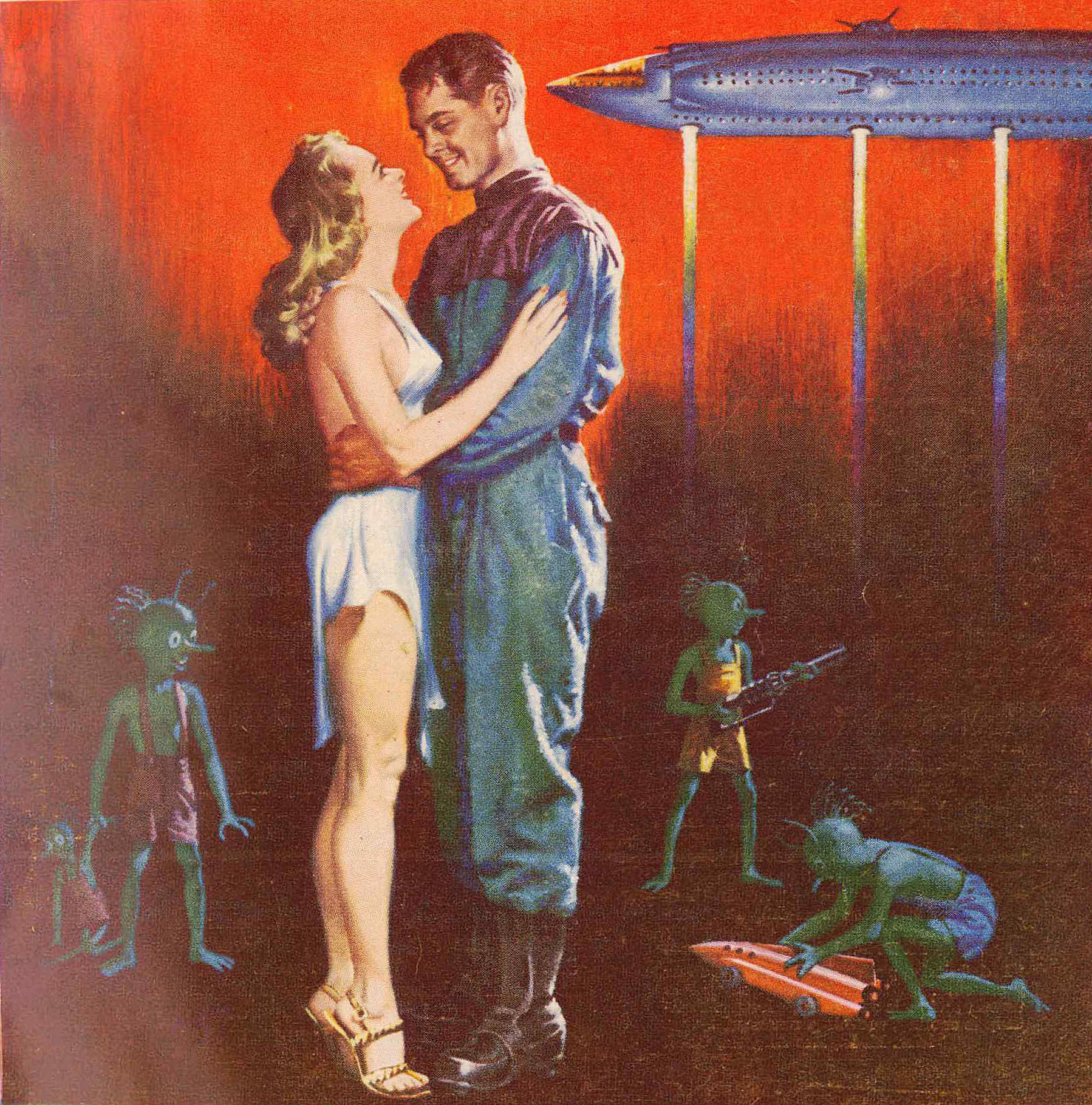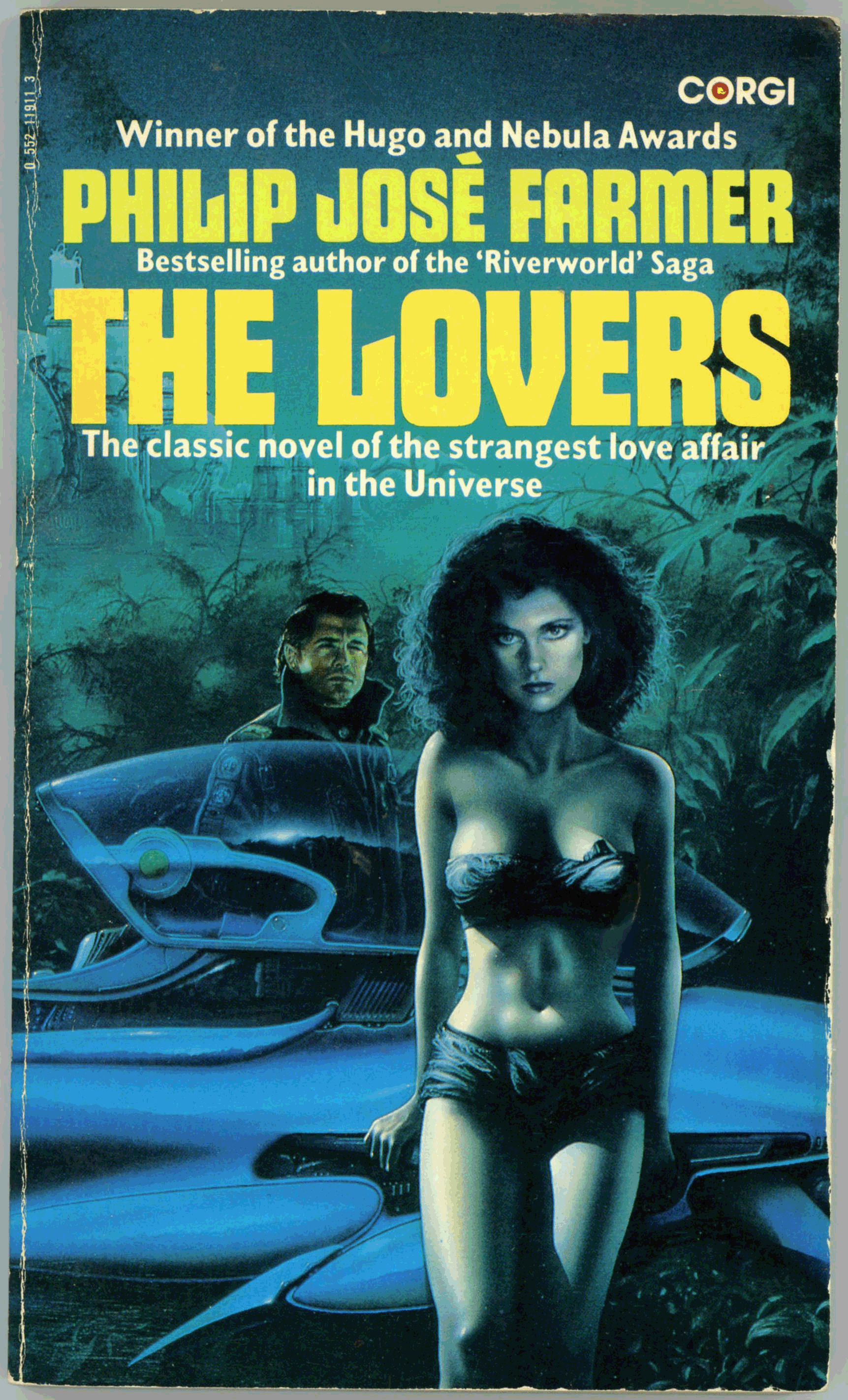Ballantine Books’ 1962 edition of Philip José Farmer’s The Alley God bears a singular example of Richard Powers’ cover art. But, before we get to that…
Here’s the cover of the June, 1959, issue of The Magazine of Fantasy and Science Fiction where the story first appeared, under the title “The Alley Man“. This cover’s by EMSH – Edmund Emshwiller. As described in Brian Ash’s The Visual Encyclopedia of Science Fiction, “…[the story] is in some ways akin to “Flowers For Algernon”, though on a more personal level. A mental and physical throwback, who believes himself to be the last of the Neanderthals, tries to come to terms with the modern world, and, in particular, with the intellectual superiority of the girl he loves.”
______________________________
Sidgwick and Jackson’s imprint (the only hardcover printing featuring the story), with cover art by David Hardy, appeared in 1970. This is the only appearance of the story in English-language book format other than Ballantine’s paperback edition. As in Ballantine’s prior imprint, the title is The Alley God. Via the ISFDB, “Sidgwick and Jackson was originally established in 1908 and acquired by Macmillan in the 1980s. It’s now an imprint of Pan Macmillan.”
This edition also includes “The Captain’s Daughter” and “The God Business”. The former is a variant of “Strange Compulsion” from the October, 1953 issue of Hugo Gernsback’s Science Fiction +, which is accompanied by six (count ’em, six) illustrations by Virgil Finlay, two of which are particularly outstanding, with a level of – um – er – uh – s y m b o l i s m (yeah, that’s it, symbolism!) that’s rather direct and unambiguous. I’ve not actually read the tale, but from what I vaguely know of it anecdotally and elsewhere – and as much as I admire Farmer’s body of work – I don’t think I’d want to. (!) As for “The God Business”, the story originally appeared in the March, 1954 issue of Beyond Fantasy Fiction.
______________________________
And so, we come to Ballantine Books 1962 Edition, which has content identical to that of the later Sidgwick and Jackson printing.
______________________________
Amidst a scene of urban desolation (notice the pebbles and stones scattered across the landscape?), under a violet and ochre sky – the colors work marvelously together! – the sun fixed above, are two human-like figures. One, kneeling, resembles the shattered remnants of a demolished building. The figure to the left is altogether different: Unlike anything else in the scene, it’s formed of a single, multiply folded bronze-like sheet, and props itself against the kneeling figure, to face the sun. (With longing? With fear? In worship? In wonder?) Where did it come from? Where is it going? For what is it searching?
Is it the only one of its kind?
Alley, (lower case) god, and man.
Easily one of Powers’ best works, I’m glad Ballantine’s design department left the image “as is”, without title or publisher’s logo printed upon it. Suitable for framing?
______________________________
There is no classifying PHILIP JOSE FARMER…
He has moved with equal ease from the rollicking adventures of “The Green Odyssey” to the weird ingenuity of “Strange Relations” to the sensitive poignancy of “The Lovers”.
Now, in the three novelets that comprise THE ALLEY GOD, he combines something of each of those qualities, using as central themes the universal concept of worship and the taboos that surround the human reproductive process.
Some people have, in the past, been shocked by the frankness of Farmer’s writing – but then, human experience is itself frequently shocking, and Farmer’s stories are of the very essence of human experience. No matter how wild the setting, nor how imaginative the circumstances, reality – human reality – is the motive power behind the foibles exposed, the shibboleths exploded, the secret dreams recalled.
______________________________
______________________________
Other Neat Places to Visit
The God of the Alley…
…at GoodReads
… at Wikipedia (“The Alley Man”)
…at Philip José Farmer Philip José Farmer International Bibliography
…at The Hugo Awards (1960)
…at L.W. Currey, Inc. (…going for $350!…)
A Book…
Ash, Brian, The Visual Encyclopedia of Science Fiction, Harmony Books, New York, N.Y., 1977
Philip José Farmer…
…at Wikipedia
…at pjfarmer.com











